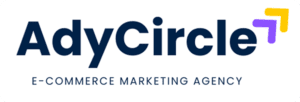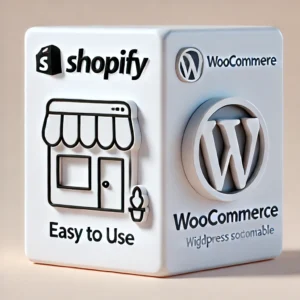Table of Contents
- Introduction
- What Are Facebook Retargeting and Google Retargeting Anyway?
- How Does Facebook Retargeting Work for E-commerce?
- What Is Google Retargeting and How Is It Different from Facebook?
- Best Practices for Facebook Retargeting Campaigns
- How to Set Up Google Ads Retargeting for Better Conversion Rates
- Cost Comparison: Facebook Retargeting vs. Google Retargeting
- Facebook vs. Google Retargeting: Which Wins for Lead Generation?
- The Hybrid Approach: Combining Both for Maximum Impact
- Conclusion
- FAQs
Picture this: You’re browsing online for a new pair of sneakers, and just when you think you’ve escaped the shopping rabbit hole, those same kicks pop up in an ad on your Facebook feed and your Google search results. Spooky, right? Well, not really—it’s just the magic of Facebook Retargeting vs Google Retargeting at work. These two giants of online advertising have mastered the art of bringing customers back to your business, but the million-dollar question is: which one’s the best fit for you? In today’s digital jungle, understanding these tools can feel like finding a needle in a haystack. Lucky for you, I’ve got the scoop—backed by real experience and a sprinkle of data—to help you decide. Let’s dive in!
What Are Facebook Retargeting vs Google Retargeting Anyway?
Let’s start with the basics. Retargeting—sometimes called remarketing—is like giving your website visitors a friendly nudge to come back and finish what they started. Both Facebook Retargeting vs Google Retargeting use clever tech to track folks who’ve interacted with your brand and then serve them tailored targeted ads to reel them back in.
- Facebook Retargeting: Think of this as your social butterfly. It uses the Facebook Pixel—a tiny snippet of code—to track users across the platform and Instagram. It’s perfect for catching people while they’re scrolling through memes or stalking their high school crush.
- Google Retargeting: This is more like the wise owl of the ad world. Through Google Ads, it taps into the massive Google Display Network (over 2 million websites!) and YouTube to remind users about your brand wherever they roam online.
Both are champs at online advertising, but they play the game differently. According to eMarketer, retargeted ads can boost conversion rates by up to 147%—proof they’re worth a closer look.
How Does Facebook Retargeting Work for E-commerce?
Imagine you run an online store selling quirky socks. Someone visits your site, drools over a pair with flamingo patterns, but leaves without buying. Enter Facebook Retargeting. That same person logs into Facebook later, and bam—there’s an ad showcasing those flamingo socks, maybe with a cheeky 10% off code. It’s like the universe whispering, “Hey, you forgot something!”
Facebook’s strength lies in its social vibe. With Facebook Ads, you can create eye-catching visuals and hit specific audiences based on interests, behaviors, or even life events (new parents, anyone?). For e-commerce, it’s a goldmine because people are already in a relaxed, shopping-friendly mindset. A 2023 HubSpot report found that 70% of e-commerce marketers lean on Facebook for retargeting—pretty telling, huh?
What Is Google Retargeting and How Is It Different from Facebook?
Now, let’s switch gears. Google Retargeting is less about socializing and more about catching people in the act of searching. Say that sock-shopper googles “best funky socks” a day later. Google’s Display Network could slide your ad onto a blog they’re reading, or your YouTube pre-roll ad might pop up before their cat video binge.
The big difference? Reach and intent. Google’s network is massive—spanning over 2 million sites—while Facebook keeps things cozier within its ecosystem. Google shines when users are actively hunting for solutions, making it a powerhouse for Google Ads campaigns targeting high-intent buyers.
Example: A small bakery I know used Google Retargeting to remind folks who’d visited their site about custom cakes. Result? A 20% bump in orders—proof that timing is everything.
Best Practices for Facebook Retargeting Campaigns
Ready to give Facebook Retargeting a whirl? Here’s how to make it sing:
- Segment Your Audience: Don’t blast everyone with the same ad. Create separate ad campaigns for cart abandoners, page visitors, or past buyers. It’s like tailoring a suit—fit matters.
- Use Dynamic Ads: These auto-pull product info from your site. Think of it as your ad doing the heavy lifting while you sip coffee.
- Keep It Fresh: Rotate creative every 2-3 weeks. Nobody likes a broken record.
- Avoid Overkill: Cap ad frequency at 5-7 views per month—too much, and you’ll annoy your audience.
A friend of mine who sells handmade jewelry swears by this: she retargeted cart abandoners with a “Last Chance!” ad and saw a 15% uptick in sales. Lesson? Audience targeting is your secret weapon.
How to Set Up Google Ads Retargeting for Better Conversion Rates
Google’s a bit more technical, but don’t sweat it—here’s a simple roadmap:
- Install the Google Tag: Add this to your site to track visitors. It’s your golden ticket.
- Build Audiences: In Google Ads, group users by actions—like “viewed product” or “searched X.”
- Craft Killer Ads: Use bold visuals or a 15-second video. You’re competing with a sea of content, so stand out!
- Set a Frequency Cap: Limit to 3 impressions a week—don’t bombard people.
- Test and Tweak: Check your click-through rate (CTR) weekly. A client of mine boosted theirs from 1% to 3% by swapping static ads for video.
A local gym I worked with saw conversions climb 25% by retargeting site visitors with a free trial offer. That’s the conversion boost you’re chasing!
Cost Comparison: Facebook Retargeting vs Google Retargeting
Let’s talk dollars and cents—because budget matters. Here’s a quick breakdown:
| Platform | Average CPM (Cost Per Mille) | Best For | Pitfall to Avoid |
|---|---|---|---|
| Facebook Retargeting | $10-$15 | Visual-driven e-commerce | Over-targeting small groups |
| Google Retargeting | $2-$5 (Display), $10+ (Search) | High-intent B2B or research | Bland ad creative |
- Facebook: Higher CPM, but you get laser-focused targeting. Great if your audience hangs out socially.
- Google: Cheaper on the Display Network, but costs climb with search ads. Ideal for broader reach.
A 2024 Statista report pegs Facebook’s ad ROI at 9.21x for retail—hard to argue with that! Google, though, wins for cost-efficiency on big campaigns.
Facebook vs Google Retargeting: Which Wins for Lead Generation?
Here’s where the rubber meets the road. For lead generation, it depends on your crowd:
- B2C (E-commerce or Retail): Facebook often edges out. Its visual flair and audience targeting make it ideal for impulse buys. Is Facebook Retargeting more effective than Google for e-commerce? In many cases, yes—especially for lifestyle brands.
- B2B: Google’s got the upper hand. Its intent-driven audience (think decision-makers googling “best CRM software”) pairs perfectly with Google Ads precision. Which platform has better retargeting options for B2B businesses? I’d bet on Google here.
Real talk: A tech startup I advised used Google Retargeting to nab leads for their SaaS tool, while a boutique clothing line leaned on Facebook. Both won—context is king.
The Hybrid Approach: Combining Both for Maximum Impact
Why pick sides when you can have the best of both worlds? Pair Facebook Retargeting with Google Retargeting for a one-two punch:
- Step 1: Use Google to catch high-intent searchers with Display ads.
- Step 2: Follow up with Facebook’s dynamic ads to seal the deal with visuals.
A fitness brand I know tried this—Google nabbed the initial click, and Facebook turned browsers into buyers. Result? A 30% lift in sales. It’s like peanut butter and jelly—better together.
Conclusion
So, Facebook Retargeting vs Google Retargeting—which works best? It’s not a one-size-fits-all answer. Facebook’s your go-to for engaging, social-savvy shoppers, while Google’s the champ for intent-driven hunters across the web. Or, mix them up for a hybrid win. Understanding these platforms isn’t just a nice-to-have—it’s your ticket to smarter online advertising and happier customers. Why not test both and see what clicks for your business? Drop a comment below with your thoughts, or check out more tips on our blog. And if you’re ready to level up your ad campaigns, AdyCircle is the NO1 Meta Ads and Google Ads marketing agency to make it happen.
FAQs
It’s not instant coffee, but you’ll typically see traction within 1-2 weeks if your audience is big enough (say, 1,000+ site visitors). Smaller pools might take a month to warm up. Patience pays off!
Absolutely! With Display Network CPMs as low as $2-$5, you can start small – think $50-$100 a month – and still snag decent impressions. Just keep your ads snappy to stand out.
Yes, if you’ve got the bandwidth. The hybrid approach I mentioned can double your reach and conversions. A 2023 WordStream study found combo campaigns lift ROI by 20% on average—worth a shot, right?
Overdoing it. Showing the same ad 20 times a day is a fast track to the “hide ad” button. Stick to frequency caps (5-7 for Facebook, 3 for Google) to keep folks from ghosting you.





